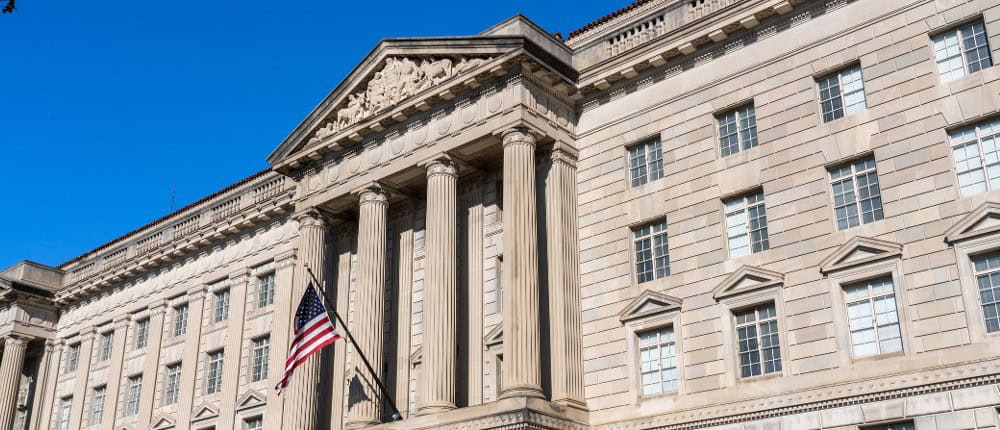A Credit Rating Downgrade is More Costly in a Rising Rate Environment.
In previous years, companies enjoyed cheaper financing and easier access to capital markets due to the lower interest rate environment. As interest rates increased, investors have demanded increasingly higher interest payments on company debt resulting in additional costs for companies accessing capital markets. The amount of interest paid on a bond is reflective of the underlying credit quality of the issuer as well as the macroeconomic environment (interest rates). A company’s credit rating is intended to reflect a company’s underlying creditworthiness and, as a result, lower quality bond issuers will typically pay a higher interest rate to bondholders to compensate for additional credit risks. As such, the current economic climate is creating higher credit costs. Any credit rating downgrade has become significantly more costly for companies due to the explicit cost of higher interest paid on future debt issuance in addition to the implicit cost of market access which is typically more difficult for companies with a lower credit rating. One indication that companies are highly motivated to avoid a downgrade is that many are exploring minimizing their debt issuance (a key component of a credit rating) in favor of relying more heavily on equity capital for significant expansions or acquisitions. In an environment where rating downgrades can lead to even higher nominal costs for issuers, additional credit research and acting ahead of the rating agencies can be even more valuable for investors.
Investment Grade Issuance Surprises as Investors Shun Riskier Assets.
Borrowing costs declined across the board in January and February which has brought a host of companies to market so far this year. Following a strong January, February brought an unexpected and record issuance on the back of lower rate volatility and investor demand. The robust investment grade (IG) issuance has been a surprise, as investors (including us) expected weaker issuance in 2023 due to the combination of high levels of borrowing in 2020-2022 and dramatically higher borrowing costs when compared to a year earlier. This trend has been particularly pronounced in the high-yield market, which according to the WSJ has borrowed more so far this year than it did in the entire second half of 2022. Persistent inflation and strong hiring have led the market to forecast even higher than previously expected rates throughout this year further increasing borrowing costs, especially for high-yield borrowers. Whether or not this high level of debt issuance persists will likely come down to how economic conditions could deteriorate through the year as well as the final level of short-term rates. One area of support for this trend has been investor demand for IG credit. According to data from Bank of America, IG mutual funds and ETFs have seen robust inflows this year as investors buy into higher yields and shun riskier credit and equity. This year IG funds have seen 1.2% growth in assets compared to a 3.1% decline in high-yield. It is notable that investors are also continuously moving into money market vehicles as short-term interest rates continue to rise (2.3% growth in assets this year, the highest of all asset classes). Investors are facing a new environment where stocks aren’t the only return in town and are moving money to less risky and higher returning fixed income. Should this trend continue we believe that investment grade companies will find the market supportive of new issuance and though high-yield companies have been able to effectively tap the market this year, these trends suggest that may be changing.
Rising Rates are Proving to Be a Heavy Weight on the Housing Market.
It is no secret that the housing market has been on fire for the past several years, with the S&P CoreLogic Case-Shiller U.S National Home Price index climbing 45% from the beginning of 2020 up until its peak in June of last year. The inflection point was reached last summer when interest rates discovered the consumer breaking point at which people no longer deemed it financially viable to purchase a home. A primary goal of the current rising rate environment is to cool inflation, and the Federal Reserve has announced its intention to continue to raise the short-term rates as inflation has proven resilient. According to Freddie Mac, mortgage rates have now risen for four consecutive weeks to 6.65%, the highest since November 2022. This appears to be an invisible threshold for many Americans, as mortgage applications from home buyers declined in the week ended February 24th to the lowest trough in 28 years according to the Mortgage Bankers Association. As a result of climbing rates and the subsequent declining home prices, the U.S housing market suffered a $2.3 trillion drop in the second half of 2022, the largest since the 2008 housing crisis with a 5.8% decline over the same time frame. The value lost was significantly dependent on the location of the home. Many Pandemic “boomtowns” such as Miami and Knoxville increased in value, whereas expensive cities such as San Francisco, Oakland, and New York saw a decline in the back half of 2022. However, it is important to note that housing prices are not collapsing over a longer period. In December, the total value of U.S homes was 6.5% higher than the previous year. Housing prices are experiencing a longer lag to fall than anticipated causing many homebuyers to step out of the market to wait for more favorable conditions. Even though home prices are off their previous peaks from last June, buyers remain tentative in fear of entering at this highly elevated price level. Up until recently, homeowners reaped the rewards from seemingly ever-increasing prices, but this new transition has caused people on both sides of the market to contemplate their appetite more thoroughly. If rates retreat closer to the ~6% range, we could see another influx of potential homebuyers who moved themselves to the fence in past months. The spring season is a strong indicator of what to expect in the near-term for the housing market, and it will paint a clearer picture when the market typically picks back up in the warmer summer months.
Subprime Auto Causing Investors to Lose Sleep, Even in Las Vegas.
Last week, members of the Public Trust Credit Team attended the Structured Finance Association conference in Las Vegas. The conference, titled SFVegas 2023, provided an opportunity for structured finance issuers, investors, and brokers to gather. Structured finance is a broad term incorporating multiple investment structures, but Public Trust is most focused on asset-backed securities (ABS) and asset-backed commercial paper (ABCP). Both structures could include sub-prime auto loans, a term that does not necessarily indicate anything concerning given the vagaries of the definition. Typically, sub-prime refers to a loan made to a borrower with a credit score below 620, but that credit score could be due to the youth of the borrower or an isolated circumstance. However, when taken together, negative developments in subprime borrowing are generally considered to be a harbinger of credit market stress. Recent reports that show January’s 30-day and 90-day past due payments were higher than they have been since the data set has been collected, suggest tough times may be ahead for the subprime issuers and investors. The data is reported on a monthly basis by the ABS security issuers and it is closely tracked by market participants. Because of this, subprime stress was a big topic of conversation during the SFVegas conference. Over the coming months, these reports are likely to generate even more focus in the financial press.



